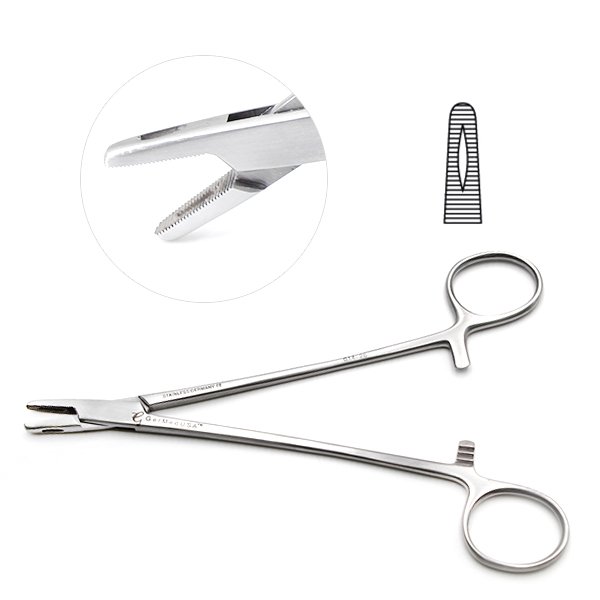As a medical professional, selecting the appropriate instruments for surgical procedures is critical for achieving positive outcomes. Two commonly used surgical instruments are needle drivers and hemostats, and determining which tool to use can impact the success of the procedure.
In this article, we will discuss the differences between needle drivers and hemostats, when to use each instrument, and their unique features that make them suitable for specific procedures.
What is a Needle Driver?
A needle driver is a surgical instrument that is designed to hold and manipulate a surgical needle during suturing. The needle driver has two opposing arms with serrated tips that are designed to grip the needle, allowing the surgeon to control the needle and suture material. Needle drivers are available in various lengths, widths, and styles, and are commonly made of stainless steel, making them durable and long-lasting.

When to Use a Needle Driver
Needle drivers are ideal for procedures that require precise needle placement and control, such as suturing. They are particularly useful in situations where the needle needs to be rotated, which can be difficult to achieve with forceps or other instruments. Needle drivers are also suitable for procedures that require delicate handling of tissue, as they provide a firm grip on the needle without causing damage to surrounding tissue.
Unique Features of a Needle Driver
One of the unique features of a needle driver is the ratcheting mechanism that allows the surgeon to control the tightness of the grip on the needle. This feature provides better control and stability during the suturing process, leading to improved outcomes.
What is a Hemostat?
A hemostat, also known as a hemostatic clamp or arterial forceps, is a surgical instrument used to control bleeding during surgical procedures. Hemostats have two opposing arms with serrated tips that can be locked in place, providing a firm grip on tissue or blood vessels. Hemostats are typically made of stainless steel and are available in various lengths and widths.

When to Use a Hemostat
Hemostats are ideal for procedures that involve controlling bleeding, such as removing an object from the body or clamping blood vessels. They are also useful in situations where a surgeon needs to grasp and manipulate tissue during the procedure.
Unique Features of a Hemostat
One of the unique features of a hemostat is the locking mechanism that allows the surgeon to clamp and hold tissue or blood vessels in place. This feature provides better control and stability during the procedure, leading to improved outcomes.
Needle Driver Vs Hemostat: Which One to Use?
Choosing the right instrument for the surgical procedure is critical for achieving positive outcomes. While needle drivers and hemostats have similar features, they are designed for different purposes and are suitable for specific procedures.
In general, needle drivers are ideal for suturing and delicate tissue handling, while hemostats are suitable for controlling bleeding and grasping tissue during a procedure. In some cases, both instruments may be required for a procedure, and it is important to have both on hand to ensure that the surgical team has the appropriate tools to achieve successful outcomes.
Conclusion
In summary, Needle Driver Vs Hemostat. Both are critical instruments used in surgical procedures. The choice between these two instruments depends on the specific needs of the procedure. Needle drivers are ideal for suturing and delicate tissue handling, while hemostats are suitable for controlling bleeding and grasping tissue during a procedure.
Ultimately, selecting the appropriate instrument requires a thorough understanding of the procedure and the unique needs of the patient. By having both needle drivers and hemostats available, surgical teams can ensure that they have the tools necessary to achieve successful outcomes.